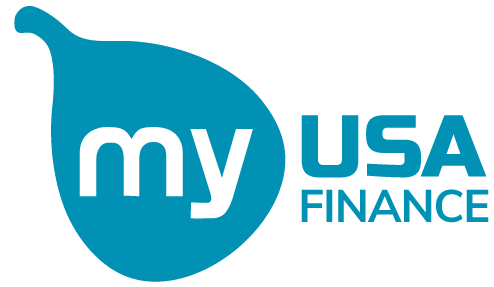Struggling to navigate the loan approval process due to a poor credit history? For individuals with a FICO score below 600, bad credit loans can offer a solution.
From unexpected expenses to medical emergencies or debt consolidation, bad credit loans can provide quick access to much-needed funds. However, these loans often come with higher interest rates and fees, making it essential to understand their features, risks, and considerations before borrowing.
This guide will help you navigate the world of bad credit loans so you can make an informed financial decision.

Looking for a Personal Loan?
Explore your options today!
What is a Bad Credit Loan? Explained
A bad credit loan is a type of personal loan specifically designed for borrowers with low credit scores, typically below 600. Similar to other personal loans, these loans feature: Fixed interest rates and Monthly installment payments.
However, bad credit loans often carry higher rates and fees, with some lenders requiring collateral, such as a car or home, to secure the loan.
However, how bad credit loans differ from personal loans is important to understand. Bad credit loans often carry higher rates and fees, with some lenders requiring collateral, such as a car or home, to secure the loan.
Types of Bad Credit Loans
Based on the requirement of collateral, bad credit loans can be categorized into:
- Unsecured Bad Credit Loans: These loans require no collateral, but their interest rates may be higher due to the increased risk to the lender.
- Secured Bad Credit Loans: These loans are backed by collateral, or assets you own. If you can’t repay the loan, the lender can seize your collateral.
Bad Credit Loans Pros and Cons
Bad credit loans, like other financial products, present a unique blend of pros and cons.
Advantages of Bad Credit Loans
- Accessibility: These loans are available even for those with low credit scores.
- Credit Score Rebuilding: personal loans provide an opportunity to rebuild credit scores by managing the loan responsibly.
Disadvantages of Bad Credit Loans
- High-Interest Rates: The interest rates for bad credit loans are typically higher than
- Fees: There could be additional fees associated with these loans, which may increase the overall cost.
Where Can You Get a Bad Credit Loan?
Options for bad credit loans include online lenders, credit unions, traditional banks, and alternative lending sources. Each has its benefits and potential pitfalls.
Online Lenders: They offer a swift loan approval process and flexibility, making them a favorable choice for those seeking a bad credit loan. However, always verify the lender’s credibility and review the terms thoroughly before proceeding.
Credit Unions: Member-owned and not-for-profit, credit unions may offer more personalized service and be willing to work with individuals with less-than-perfect credit.
Traditional Banks: Some may offer secured loans for those with bad credit, backed by collateral.
Alternative Lenders: These include peer-to-peer platforms and other non-traditional sources that can provide more flexible or short-term loans. Exercise caution and fully understand the terms before engaging with these lenders.
Read More: How To Get A Personal Loan with Bad Credit
Who Should Consider a Bad Credit Loan?
If you need cash quickly and don’t qualify for other loans, a bad credit loan may be the best option. If you have the time, you might choose to build up your credit or save instead.
Generally, unsecured loans are the best option for borrowers with poor credit. In most cases, these loans have higher interest rates. However, if time is of the essence, it may be your only option.
Considerations before taking a bad credit loan are critical to ensure you make an informed choice. Make sure to explore all your options before making a decision, and always read the terms and conditions carefully.
How Much Will My Bad Credit Loan Cost?
When considering a bad credit loan, it’s important to understand the total cost of borrowing money. The amount you borrow, repayment terms, and factors such as annual percentage rate (APR) all play a role in determining the cost.
Keep in mind that bad credit loan APR considerations are especially important, as these loans typically come with higher APRs.
To prevent expensive late fees or penalties, it’s crucial to make your loan payments on time. By knowing the total cost and staying on top of payments, you can successfully manage your bad credit loan.
Ways to Spot Loan Scams
The following are some red flags to watch out for when shopping for a bad credit loan.
Upfront Fees. Legitimate lenders do not charge any fees before you sign a loan agreement, and they should never ask you to pay anything in advance. If a lender asks for money up front, it’s likely a scam.
No Terms and Conditions. If there are no terms and conditions listed on the website or in the agreement itself, this could be a sign of a scam.
No Physical Address. A lack of physical address could indicate that the lender is operating illegally or may be trying to hide from authorities or customers who have had problems with them in the past.
Unsecured Website. Take note of how professional the lender’s website looks and feels when you visit it online. Most legitimate lenders will have professional-looking websites with detailed information about their services and contact information available at all times.
Recap and Final Thoughts
Bad credit loans can be a viable option when quick cash is needed. It’s crucial to understand their features and costs to decide if they suit your financial needs. More than just access to funds, these loans are about taking control of your financial stability and credit future.
Research thoroughly and compare offers to ensure you get terms that fit your financial plan. If a bad credit loan is the right choice for you, use it responsibly to regain financial footing.
FAQs about bad credit loans
What are the eligibility requirements for a bad credit loan?
Typically, lenders require proof of income, a valid ID, and a bank account. Some may have minimum credit score requirements, but these are usually lower than traditional loans.
Can I get a bad credit loan with no collateral?
Yes, unsecured bad credit loans are available which do not require collateral. However, they may come with higher interest rates due to the increased risk to the lender.
How does a bad credit loan impact my credit score?
If managed responsibly, a bad credit loan can help improve your credit score. Consistent, on-time payments can positively affect your credit history.
What is the typical application process for a bad credit loan?
The process usually includes completing an application, providing financial documentation, and awaiting approval. Online lenders may offer a quicker application and approval process.
How can I improve my credit score to qualify for better loans in the future?
Pay bills on time, reduce outstanding debts, avoid new credit inquiries, and check your credit reports for errors to improve your credit score over time.
Looking for a Personal Loan?
Explore your options today!











